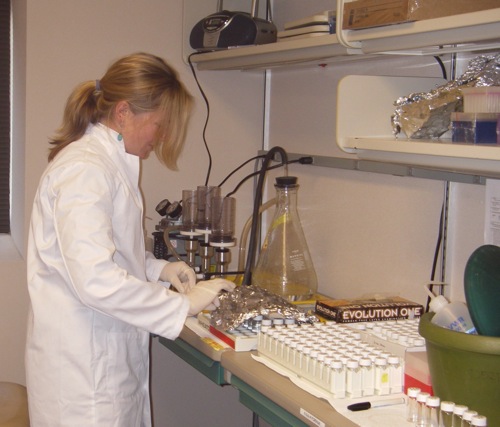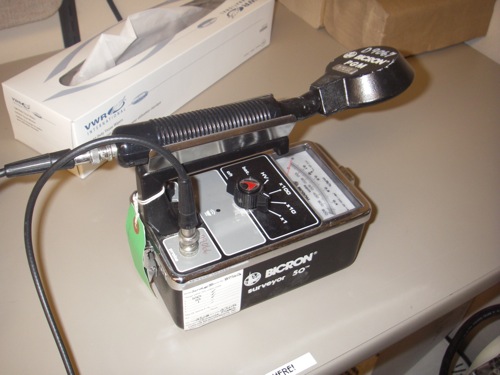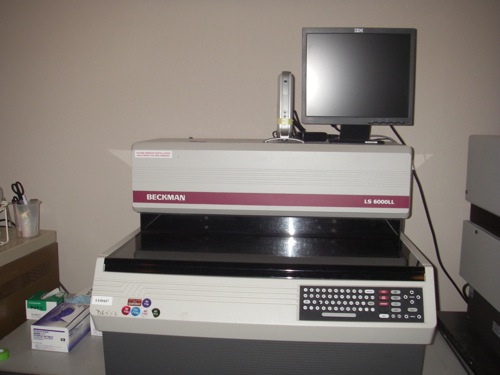The DOM team is getting into a great groove in the Crary Lab at McMurdo Station. Christine, Heidi, and Birgit are running biological tests on water samples while Chip, Collin, Yo, and Mike work on chemical analyses. I pitch in when and where I can and I love learning so many new techniques and ideas. We are excited to see the fruits of our field sampling labor ripening into great data. Today I would like to introduce you to another one of the tests we perform on the sampled water and the purpose behind the analysis. Bacterial Production (BP) by 3H (Tritiated) Thymidine Incorporation: Before I begin to describe the BP test, let me start with a brief description on the structure of one of the greatest "building blocks" of life, deoxyribonucleic Acid (DNA). Think of DNA as the instruction manual of every cell in an organism. DNA is made up of pairs of nucleotides that are linked together and stacked upon each other like a ladder. The pairing, number of, and order of the nucleotides is like the chapters of the DNA "instruction manual." The names of the nucleotides are Uracil, Cytosine, Thymine, Adenine, and Guanine. If you could imagine zooming in even further on a nucleotide, like Thymine, otherwise known as Thymidine, you would see that Thymine is actually composed of a specific number of certain chemical elements that are linked together in an exact way. Scientists are able to incorporate radioactive markers on to a Hydrogen atom (tritium) in each of the Thymine nucleotides in a DNA strand. These Thymine nucleotides are then called 3H Tritiated Thymidine. As the bacterial cells divide repeatedly, each new cell that comes about because of the division has radioactively marked Thymine in its DNA strand. The more prolific the cells in the organism are at dividing, the more radioactivity is spread throughout the organism's DNA. Christine and Heidi, use this method to determine the production of bacteria in the water samples we collect at the Canada Stream and at the sampling sites on the Cotton Glacier Stream. They add radioactively labeled Thymidine to their water samples, and then incubate them for 20 hours. Back in the lab at Crary, they are able to detect the growth, or productivity, of the bacteria by the amount of radioactivity using a scintillation counter.
 The BP test uses radioactive materials- special training is needed to use these chemicals.
The BP test uses radioactive materials- special training is needed to use these chemicals.
 Heidi
Heidi
 A tool used to detect radioactivity, but the levels in our BP tests are so low this tool does not work.
A tool used to detect radioactivity, but the levels in our BP tests are so low this tool does not work.
 This machine is able to detect the low levels of radioactivity in our tests.
This machine is able to detect the low levels of radioactivity in our tests.
